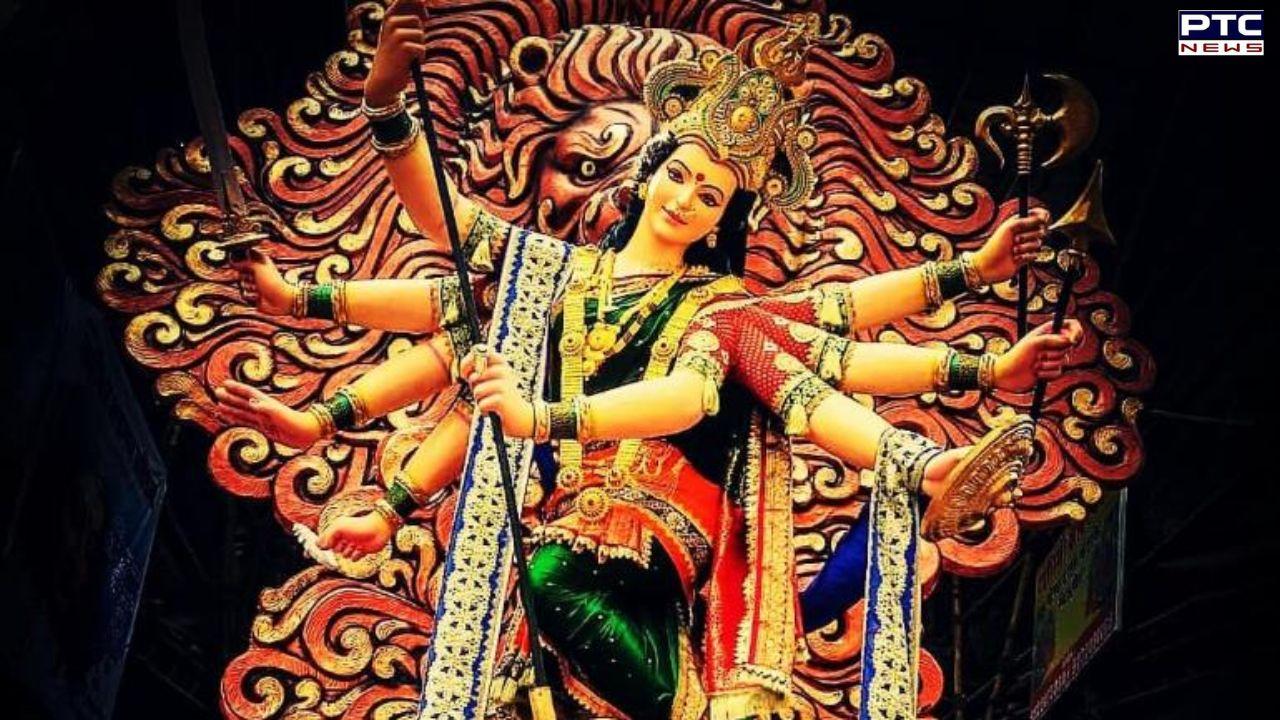Navratri 2024: 9 days, 9 types of bhog to offer 9 avatars of Goddess Durga
The festival of Shardiya Navratri has begun. The nine-day festival is devoted to the worshipping of Goddess Durga's nine avatars.

Navratri 2024: The festival of Shardiya Navratri has begun. The nine-day festival is devoted to the worshipping of Goddess Durga's nine avatars.
This year, the festival begins on October 3 and will last until October 11, with October 12 marked as Vijaydashmi or Dussehra. During these nine days, 9 avatars of Maa Durga are worshipped.
Maa Durga's nine avatars are Maa Shailputri, Maa Brahmacharini, Maa Chandraghanta, Maa Kushmanda, Maa Skandamata, Maa Katyayani, Maa Kalaratri, Maa Mahagauri, and Maa Siddhidatri.
The festival also fosters a sense of community and cultural identity. It is celebrated with dance, music, and various local traditions that highlight the vast diversity of Indian culture.
Navratri Bhog 2024
Day 1: Maa Shailputri
On the first day, devotees worship Maa Shailputri, who symbolises purity and new beginnings. She rides bull Nandi while holding a Trishul and a lotus.
Kheer (sweet rice pudding), milk-based desserts and coconut water are among the recommended bhogs. Offering these foods is said to improve health and vitality in one's life. It is stated that offering pure desi ghee on this day blesses followers with good health.
Day 2: Maa Brahmacharini.
The second day is dedicated to Maa Brahmacharini, a goddess of knowledge and devotion. She walks barefoot, holding a Rudraksha mala in one hand and a Kamandalu in the other. On this day, devotees offer sugar as bhog, to increase knowledge and ensure a long life free of untimely death.
Day 3: Maa Chandraghanta.
On the third day, devotees celebrate Maa Chandraghanta, who represents peace and courage. Goddess Chandraghanta is a strong 10-armed goddess who wears a crescent moon on her forehead.
Her bhog includes milk, kheer, and other milk-based delicacies. It is common to donate these offerings to temples or the poor after offering them to the goddess, who is said to relieve pain and bring joy.
Day 4: Maa Kushmanda
The fourth day celebrates Maa Kushmanda, who is associated with intelligence and success. Devotees serve malpua, a sweet flatbread prepared with flour and jaggery. Feeding malpua to Brahmins on this day improves decision-making skills and increases wisdom.
Day 5: Maa Skandamata
On the fifth day, Maa Skandamata is celebrated as the goddess of compassion and motherhood.
Goddess Skandamata has four arms and has a lotus in two of them, as well as a sacred Kamandalu and a bell in the other two.
Devotees offer bananas as bhog, representing health and well-being. Offering bananas is believed to confer lifelong health on the devotee.
Day 6: Maa Katyayani
On the sixth day, devotees celebrate Maa Katyayani, who represents strength and determination. Goddess Katyayani is a Shakti form and is regarded as one of the most violent forms of Goddess Parvati. She has four arms and is carrying a sword.
Honey is the recommended offering, representing the sweetness of life. Those wanting success in media or entertainment often pray to Maa Katyayani on this day, eating honey as prasad.
Day 7: Maa Kalaratri
The seventh day celebrates Maa Kalaratri, who protects against evil forces. Goddess Kaalratri is a four-armed deity who rides a donkey and wields a sword, trident, and noose. She possesses a third eye on her forehead, which is thought to contain the entire universe.
On this day, devotees offer jaggery as bhog. It is thought that jaggery adds sweetness to life after overcoming obstacles.
Day 8: Maa Mahagauri
On the eighth day, Maa Mahagauri is honoured as the embodiment of purity and serenity. Goddess Mahagauri is a four-armed deity who rides either a bull or a white elephant. She has a Trishul and a Damru in her hands.
On this day, devotees often perform kanya pujan (worship of young girls) and offer coconut as bhog. This offering represents fertility and new beginnings.
Day 9: Maa Siddhidatri
The final day of Navratri celebrates Maa Siddhidatri, who represents knowledge and enlightenment. Goddess Siddhidhatri is a four-armed deity who sits on a lotus and holds a mace, discus, book, and lotus in her hands.
On this day, devotees offer sesame seeds as bhog. This offering is especially significant for individuals who fear untimely death.
Offering these nine types of bhog during the period of nine days of worship allows devotees to express gratitude while attracting blessings into their lives. Each food item has its own importance, contributing to the spiritual experience of this sacred celebration.
